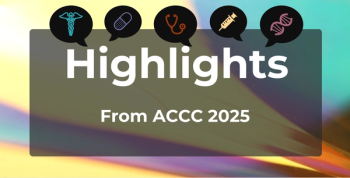
5 Things About Diabetes Drugs From the ADA Scientific Sessions
Real-world evidence received lots of attention as drug makers looked to compare therapies within a class.
Clinical trial results shared the stage with real-world evidence at the 78th American Diabetes Association (ADA) Scientific Sessions, which took place June 22-26, 2018, in Orlando, Florida, as competition between drugs to treat diabetes brought out companies to comment on the findings.
From last week’s meeting are these 5 key takeaways:
1. A new study of canagliflozin finds no amputation risk.
Canagliflozin, sold as Invokana by Janssen, was found to have an increased risk of amputations in
2. Sotagliflozin drives down A1C, weight in type 1 diabetes (T1D).
Positive results from the phase 3 inTandem1 study showed that at 52 weeks, patients with T1D had significantly lower glycated hemoglobin (A1C) after taking insulin alongside sotagliflozin, a dual inhibitor that targets both the SGLT2 and SGLT1 proteins responsible for glucose reabsorption. Results, which were published in
The study drug was tested at 2 doses: 200 mg and 400 mg. Those taking the 200 mg dose lowered A1C 0.25% more than placebo, and those taking the 400 mg dose lowered A1C 0.31% more after 52 weeks. Net clinical benefit—those who had A1C below 7% without hypoglycemia or diabetic ketoacidosis (DKA)—was also significantly higher than placebo at the 400 mg dose. However, treatment was linked to more cases of DKA.
3. CONFIRM shows insulin degludec improves A1C, reduces hypoglycemia more than insulin glargine U300.
In CONFIRM, a real-world evidence study of 4000 adults with type 2 diabetes starting basal insulin for the first time, patients taking insulin degludec, sold as Tresiba by Novo Nordisk, had significantly lower A1C after 6 months than those taking insulin glargine U300, sold as Toujeo by Sanofi. Drops in A1C were —1.5% for insulin degludec and –1.2% for insulin glargine U300. The
4. Are cardiovascular outcomes trials worth the cost?
Ten years after the FDA began requiring drug manufacturers to study whether drugs for diabetes, obesity, and cardiovascular conditions are safe—meaning they don’t cause heart attacks—an
5. Clinical inertia still keeps doctors from increasing therapy.
Researchers examining a large, national database found new results about an old problem: doctors often fail to increase therapy for patients with T2D, even when clinical indicators show they should. Data from
Newsletter
Stay ahead of policy, cost, and value—subscribe to AJMC for expert insights at the intersection of clinical care and health economics.












































